How Juniper Networks Set Up a Global Virtual Summit

Like many organizations, Juniper Networks’ planned annual customer conference was put on hold because of the COVID-19 global pandemic. But a pause in International travel didn’t mean Juniper Network had to miss out on engaging its customers.
Juniper Networks had an opportunity: it could upend its conference model and engage directly with its customers no matter where they are and no matter what language they speak.
So, with ON24, it did.
But how did precisely the company’s team do it? Let’s look at how Juniper Networks set its global virtual conference up for success.
Setting Up for a Global Virtual Summit

Juniper Networks needed to continue to engage its global customers despite travel and health restrictions. To do this, the team decided to take its best-in-class conference model, like NXTWORK, and move it into a digital space where attendees can watch, listen and interact with the company’s thought leadership content.
To kickstart this digital pivot, Juniper created a virtual enterprise summit, “Where AI Gets Real.” Beyond engagement, the company’s goal for this event was to create its first-ever truly global virtual summit delivered across multiple time zones.
This meant the virtual summit team had to ideate, organize, create, rehearse, record and — finally — translate content into six different languages. And it had to do it all in just six weeks.
With so many moving parts requiring different deadlines and deliverables, there was a high chance that something could go wrong.
So what can a company do to reduce the likelihood of something going off the rails? Simple: get teams to align on goals and deliverables and then break those deliverables down into smaller chunks.
In the case of Juniper Networks, its “Where AI Gets Real” virtual summit contained 34 distinct webinars. These included:
-
- Three keynotes
- Three customer conversations
- Twenty-two breakout sessions
- Six demos
Each of those categories will have different goals and content requirements. For example, keynote broadcasts and demos in virtual summits will typically need to have higher production values than breakout sessions. This means building out a longer lead time for content creation.
Conversely, breakout sessions will typically rely on knowledgeable subject matter experts who are more focused on walking through slides or providing expertise in their area.
Finally, consider the length of each session in a virtual summit. An hour-long keynote may be appropriate, depending on the summit itself. But a 45-minute breakout session may lead to attendees tuning out.
To get around this potential attention deficit, Juniper Networks created snackable-sized content — webinar sessions lasting anywhere from three to 23 minutes — for “Where AI Gets Real.”
By knowing what content — especially webinar content — will require what resources is essential for prioritizing and creating your content.
Globalizing the Content

Juniper Networks had a lot of content it had to record. It also had to translate that content into six different languages. So, how can an organization prioritize translations while producing content?
There are a few things you can do to prioritize and localize content to a specific region to drive business-specific goals. First, know what services your regional audiences are interested in, which of your content converts across markets and absolutely essential information that needs to be shared.
In the case of Juniper Networks, it did not translate all 34 webinars in its summit. Instead, it prioritized and translated six high-value content experiences in English across five different languages.
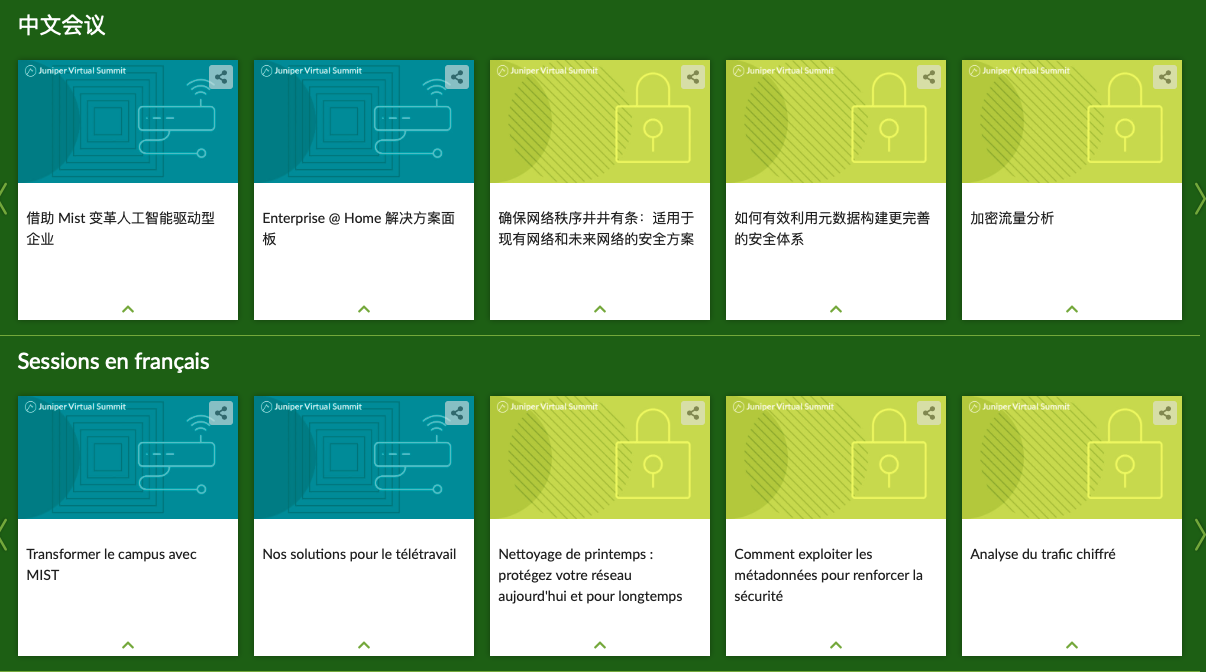
So when it comes to scaling content globally, sit down and ask yourself:
- Does this content solve or address the needs of a regional audience?
- Does this content or asset tend to convert or nurture audiences?
- Can we re-use this translated content elsewhere?
- Will this content conform to a template to make scale easier?
With these questions answered, you should be able to prioritize and translate your most relevant and necessary assets.
Designing the Virtual Summit Page
Okay, with translated assets in hand, Juniper Networks had one last thing to do: place all of its summit content into a virtual environment.
There are a lot of ways an organization can present its content to its attendees, but, often, there are two essential elements. These are:
- A virtual summit hub – where attendees can review an agenda, tracks, sessions and extra content.
- A webinar – where attendees will watch and interact with a live or on-demand presentation.
Let’s take a look at Juniper Networks’ virtual summit hub, which is expertly laid out:
The Virtual Summit Hub
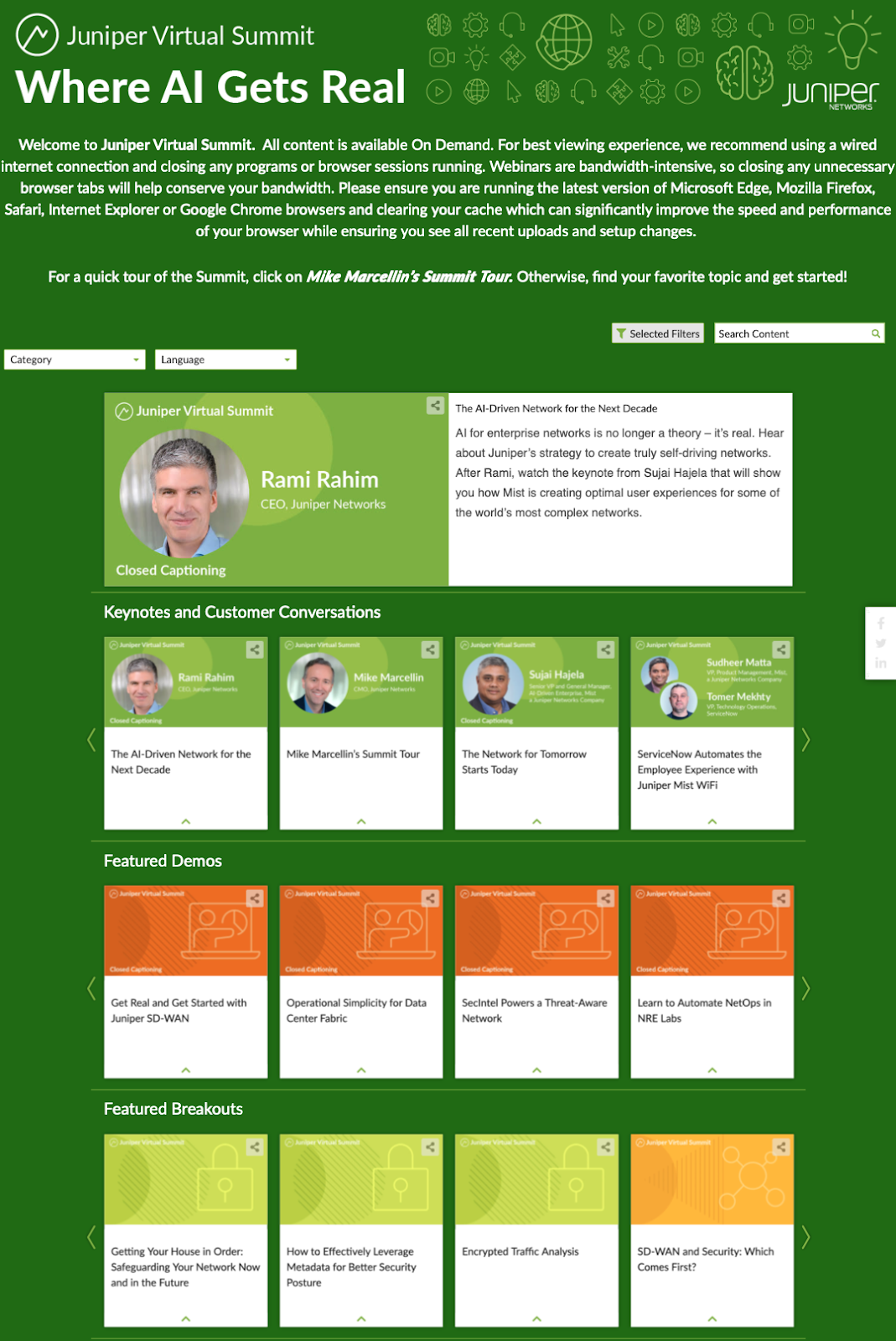
At the top of the page, Juniper Networks provides attendees instructions on how to get the best experience out of the summit. It even includes a CTA to attend a special summit tour that’ll show attendees what’s available to them in the summit and how to navigate the experience.
Below that are two filters and a search bar. With these tools, attendees can select the category and language they prefer or simply search for content they’re interested in.
Now, below the filtering tools is the actual content. The keynote event is front and center with a description of the presentation. Below it are the other special events and keynotes attendees should attend.
One thing to note is that as a virtual attendee scrolls further down the experience, the more granular the content gets. We go from high-level keynote webinars to content on Data Center and Multicloud Solutions. This is a smart layout for a focused summit.
One bonus extra element to keep in mind: each track and asset is color-coordinated. This helps to identify what they’re about to click into quickly.
The Webinar Experience
So, what should an attendee experience as they join a webinar? A smart, well-laid-out console that’s clean, branded with corporate colors and provides attendees to that particular session with all the information and engagement tools they need.
In “AI for Enterprise: Client to Cloud,” Juniper Networks provided attendees with clean interfaces with the essential ON24 Engagement Tools for that session.
Here’s what a keynote from the event looks like:
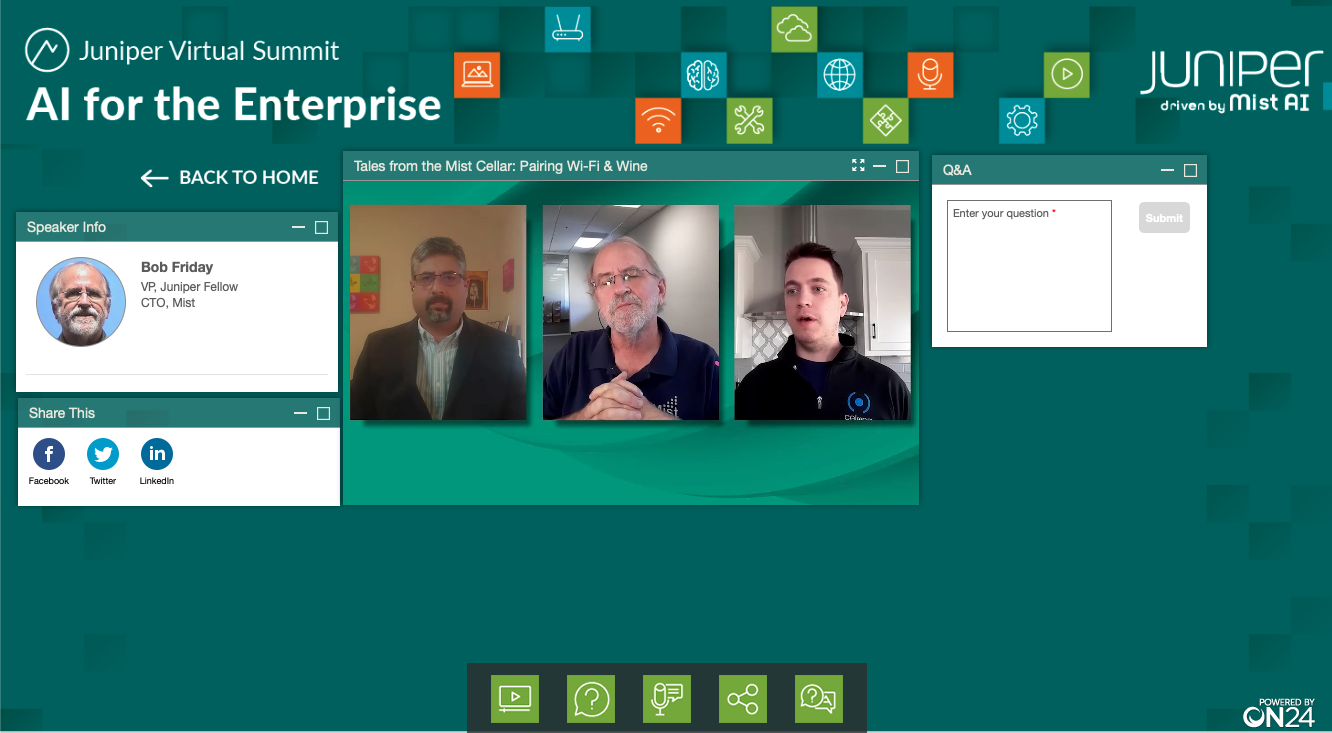
It’s a simple, but very effective console — especially good for a keynote or special session.
But what about breakout and track sessions? How are they different? Check out the console below to see what Juniper Networks did:
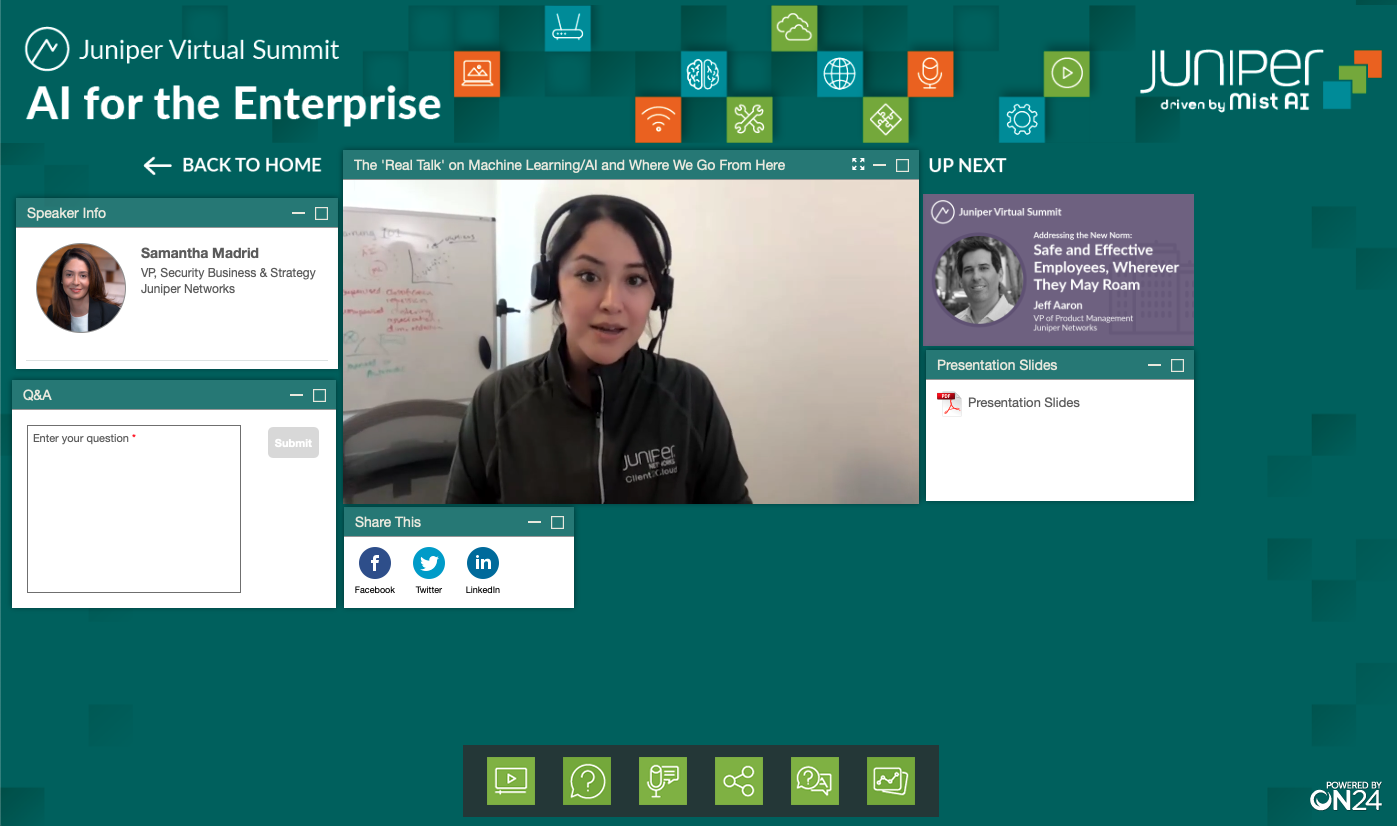
While the layout is largely the same, you’ll notice that Juniper Networks has added an “up next” banner right next to the media player window.
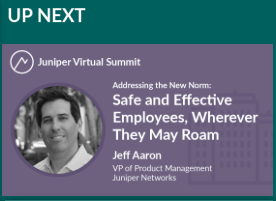
This is a great way to alert attendees of upcoming sessions and to keep them engaging with your content.
Driving Results
Juniper Networks’ approach to virtual summits works. All told, the organization drove more than 7,300 hours of engagement with customers and partners. It engaged with more than 25,000 registrants and saw attendees from 122 countries.
Tips on Getting Teams Aligned for Delivery
Virtual summits can be tricky to produce. The most essential step is to sit down, plan with stakeholders and keep communication going as the project unfolds. Here are a few other things to keep in mind:
1. Align on Goals
As you plan your virtual summit, make sure you’re clear on what your target audience want to hear from you. What information can you offer that’ll be valuable to them?
Being clear upfront will help ensure your virtual summit provides a compelling reason to attend and participate in.
2. Design with Engagement In Mind
Virtual summits — and the webinars within — are great opportunities to engage with your audiences. Make sure your team take the time to plot out engagement events, like a poll in a webinar or a contest that runs over the course of the virtual summit.
Driving engagement with attendees is essential in a virtual summit. Doing so provides insights into your audiences and helps identify interested customers and prospects.
3. Structure Your Virtual Summit with Smarts
Juniper Networks organized its on-demand virtual summit so attendees can jump to a session they’re interested in. It’s a good format, especially for a busy audience, but it’s not the only virtual summit structure out there.
For example, if your summit is live, you may prefer a sequential order, where attendees watch three or four broadcasts in a row. Additionally, you could unlock new content within a summit as a week or day progresses. It really depends on your goals.
Regardless, planning a global virtual summit is a big lift, but it’s not an impossible task.
Take the time to sit down with your team, hash out goals for the event and break it down into its constituent parts. Then, once you have your summit’s elements in order, plot out what will be recorded, who will record it and by when.
Finally, once you have your content ready, organize into an easy-to-navigate content hub and provide your audience with all of the clues they need to take the next step either in the summit or with your organization. Good luck!
